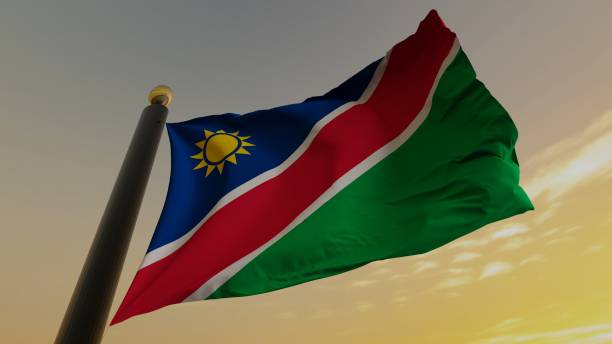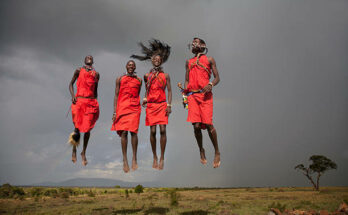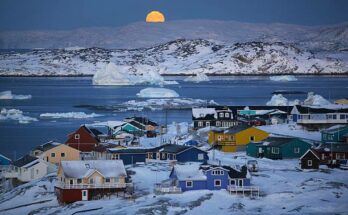Namibia, a country located on the southwestern coast of Africa, is often described as one of the most visually stunning and sparsely populated nations in the world. With its vast deserts, dramatic landscapes, abundant wildlife, and unique cultural heritage, Namibia offers an unforgettable experience for travelers seeking adventure, solitude, and natural beauty. From the towering red dunes of Sossusvlei to the rugged coastline of the Skeleton Coast, Namibia is a dream destination for nature lovers, photographers, and explorers alike.
In this article, we will explore why Namibia should be at the top of every traveler’s bucket list, highlighting its key attractions, cultural richness, and the unique experiences that make it one of Africa’s premier tourist destinations.
Geographical Overview
Namibia is bordered by Angola and Zambia to the north, Botswana to the east, South Africa to the southeast, and the Atlantic Ocean to the west. It is the seventh-largest country in Africa, yet one of the least densely populated, with only around 2.5 million people living across 824,292 square kilometers (318,260 square miles). This low population density contributes to the sense of space and tranquility that makes Namibia so appealing to visitors.
The country is characterized by diverse ecosystems, including:
- The Namib Desert , one of the oldest deserts in the world
- The Kalahari Desert , known for its red sands and semi-arid savannahs
- The Skeleton Coast , infamous for shipwrecks and wild beauty
- The Etosha National Park , a major wildlife sanctuary
- The Fish River Canyon , second only to the Grand Canyon in size
This diversity allows for a wide range of activities and experiences, making Namibia a multi-faceted travel destination.
Top Attractions in Namibia
1. Sossusvlei and the Namib Desert
One of Namibia’s most iconic sights is Sossusvlei , a salt and clay pan surrounded by some of the highest sand dunes in the world. Located within the Namib-Naukluft National Park , Sossusvlei is famous for its breathtaking sunrise views when the dunes turn a fiery orange-red under the morning sun.
Visitors can hike up Dune 45 or climb the more challenging Big Daddy to enjoy panoramic views of the desert landscape. The nearby Dead Vlei , a white clay pan dotted with ancient dead camelthorn trees, provides a surreal and photogenic contrast against the red dunes.
The Namib Desert , which stretches along the Atlantic coast, is considered the oldest desert in the world—believed to have been arid for at least 55 million years. It is home to unique wildlife adapted to extreme conditions, such as the fog-basking beetle and the Welwitschia plant, which can live for over 1,000 years.
2. Etosha National Park
Etosha National Park is one of the greatest wildlife reserves in Africa and a must-visit for safari enthusiasts. Covering over 22,000 square kilometers (8,600 square miles), the park centers around the Etosha Pan , a massive salt pan visible from space.
Wildlife thrives in the park, including the Big Five —lion, leopard, elephant, rhino, and buffalo—as well as cheetahs, zebras, giraffes, and numerous antelope species. The best time to visit is during the dry season (May to October) when animals gather around waterholes, offering excellent game viewing opportunities.
The park has several rest camps, including Okaukuejo , where visitors can watch animals come to drink at floodlit waterholes even after dark.
3. Skeleton Coast
The Skeleton Coast is perhaps Namibia’s most mysterious and hauntingly beautiful region. Stretching along the Atlantic coastline from the Swakopmund area up to the Angolan border, this remote stretch of land was named for the whalebones and shipwrecks that littered the shore during the whaling era.
The northern section of the Skeleton Coast is accessible only by air or 4×4 vehicle, adding to its exclusivity and allure. Visitors can witness the eerie remains of ships like the Eduard Bohlen and Zuiderzee , stranded in the sand for decades.
Despite its harsh environment, the Skeleton Coast supports a surprising amount of life, including colonies of Cape fur seals, hyenas, and desert-adapted elephants. The Hoanib River Valley and Huab River Valley are particularly rich in wildlife and offer rare sightings of lions, leopards, and black rhinos.
4. Swakopmund
For those looking for a mix of culture, history, and adventure, Swakopmund is the perfect stop. This coastal town was founded by German settlers in 1892 and retains much of its colonial architecture and charm.
Swakopmund serves as a gateway to the Namib Desert and offers a variety of exciting activities, including:
- Sandboarding down dunes
- Quad biking in the dunes
- Camel rides
- Scenic flights over the desert and coastline
- Dolphin cruises in Walvis Bay lagoon
The town itself is full of cozy cafés, boutique shops, and museums that tell the story of Namibia’s complex colonial past.
5. Damaraland and Kaokoland
These two regions in northwest Namibia are part of the larger Kunene Region and are known for their rugged, untamed landscapes and unique cultural encounters.
Damaraland is home to geological wonders like the Brandberg Mountain (Namibia’s highest peak), the Twelfontein Rock Engravings (a UNESCO World Heritage Site), and the Burnt Mountain .
Kaokoland is more remote and less visited, offering a glimpse into traditional Himba culture. The Himba people , one of the last indigenous tribes in Namibia, maintain a semi-nomadic lifestyle and are known for their distinctive appearance, covering their bodies in a mixture of butterfat and ochre.
Both regions also feature desert-adapted wildlife , including elephants, lions, and black rhinos that have learned to survive in the arid terrain.
6. Fish River Canyon
Located in southern Namibia, the Fish River Canyon is the second-largest canyon in the world after the Grand Canyon. It stretches about 160 kilometers (100 miles) long, up to 27 kilometers (17 miles) wide, and reaches depths of 550 meters (1,800 feet).
While the canyon can be viewed from various viewpoints, the ultimate experience is the Fish River Hiking Trail , a five-day, 85-kilometer (53-mile) trail that takes hikers through the canyon’s rugged interior. The trail is physically demanding and only open during the cooler months (April to September), but the rewards are unparalleled views and a true wilderness adventure.
Cultural Highlights and Experiences
Namibia is a culturally diverse nation, home to many ethnic groups including the Ovambo, Herero, Damara, Nama, and San people. Each group brings its own traditions, languages, and customs to the national identity.
San People – The Original Inhabitants
The San people , also known as Bushmen, are believed to be the original inhabitants of southern Africa. Though their numbers have dwindled due to displacement and modernization, there are still communities that maintain their hunter-gatherer way of life.
Visitors can learn about their deep connection to the land, survival techniques, and spiritual beliefs through guided tours and cultural experiences offered in places like Tsumkwe and the Nyae Nyae Conservancy .
Himba Culture
As mentioned earlier, the Himba people of northern Namibia offer a rare opportunity to interact with a community that has preserved its ancestral traditions. While tourism is limited to protect their way of life, respectful visits can be arranged with local guides.
Adventure Activities in Namibia
Namibia is an adventurer’s paradise, offering a wide range of thrilling outdoor activities:
- Hot Air Ballooning in Sossusvlei
- Skydiving over the Namib Desert
- Canoeing the Orange River
- Mountain Biking in Spitzkoppe
- Paragliding in Swakopmund
- Dune Climbing and Sliding
- Kayaking with Seals in Walvis Bay
Whether you’re a thrill-seeker or prefer leisurely exploration, Namibia caters to all levels of adventure.
When to Visit Namibia
The best time to visit Namibia is during the dry season , from May to October , when temperatures are mild, rainfall is minimal, and wildlife viewing is optimal. During these months, animals congregate around water sources, making them easier to spot in parks like Etosha.
If you’re interested in birdwatching or want to see the desert bloom (which happens rarely after heavy rains), consider visiting between November and April , although it can be hotter and more humid.
Getting Around and Travel Tips
Namibia is a large country, and distances between attractions can be significant. Here are some tips for getting around:
- Self-drive safaris are popular and recommended for independent travelers. Roads are generally good, especially in the central and southern parts.
- Car rentals are widely available in Windhoek, Swakopmund, and other major towns.
- For remote areas like the Skeleton Coast and Kaokoland, a 4×4 vehicle is essential.
- Domestic flights are available between major cities and lodges for those short on time or seeking luxury.
- Always carry extra fuel, water, and food when traveling through remote regions.
Conclusion
Namibia is a country of extremes—where the desert meets the ocean, where silence reigns supreme, and where nature puts on a show unlike anywhere else in the world. Its combination of stunning landscapes, rich biodiversity, and cultural depth makes it a truly unique travel destination.
From the golden dunes of Sossusvlei to the wild coasts of the Skeleton Coast, from the wildlife-filled plains of Etosha to the rugged beauty of Fish River Canyon, Namibia offers something for every type of traveler. Whether you’re seeking adventure, photography, relaxation, or cultural immersion, this African gem promises memories that will last a lifetime.
So pack your bags, lace up your hiking boots, and get ready to explore one of the most awe-inspiring countries on Earth—Namibia awaits .
Frequently Asked Questions (FAQ)
Q: Is Namibia safe for tourists?
A: Yes, Namibia is considered one of the safest countries in Africa for tourists. However, standard precautions like avoiding night driving and securing valuables should be taken.
Q: What currency is used in Namibia?
A: The official currency is the Namibian Dollar (NAD) , though the South African Rand (ZAR) is also widely accepted.
Q: Do I need a visa to visit Namibia?
A: Most visitors from Western countries do not require a visa for stays under 90 days. Check with your local embassy for specific requirements.
Q: What languages are spoken in Namibia?
A: English is the official language, but Afrikaans, German, and various indigenous languages are also spoken.
Q: What is the food like in Namibia?
A: Traditional dishes include biltong , biltong stew , potjiekos , and kapana (grilled meat). Seafood is fresh and plentiful along the coast.


